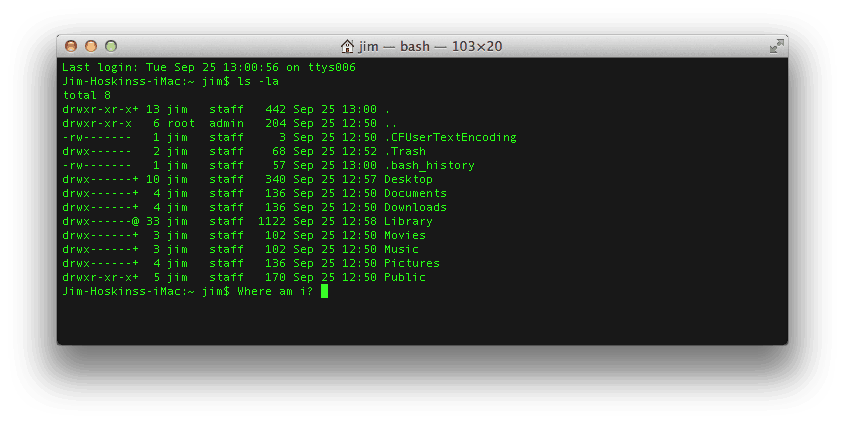

- Mac os x command line find file mac os x#
- Mac os x command line find file mac#
- Mac os x command line find file windows#
Once Terminal is opened (by opening Finder, selecting Applications, opening the Utilities directory and double-clicking Terminal), the Mac user is greeted with the command prompt. Using Terminal to access files and folders Beneath the root, on most Macs by default, are several additional folders, including Applications (which stores programs) and Users (which stores home folder information for each user possessing an account on the machine). The root directory is often referred to as /. To navigate to a specific file’s path, which can prove critical when attempting to administer a Mac using the Terminal, first, the user must understand the directory structure. That may seem obvious to more advanced users and administrators, but even some more seasoned users may not be aware an absolute directory path exists for each file. Folders located within (or beneath) the root directory are known as subfolders or subdirectories, two different ways of saying the same thing. The top, uppermost folder is known as the root directory.
Mac os x command line find file mac os x#
The Mac OS X file system stores files within folders, also known as directories. Still others, accustomed to logging on to Macs and finding the desktop, applications, documents, downloads, movies, music, pictures and other files already stored in handy, easily folders accessed via the Finder, aren’t necessarily confident they understand where these folders and their contents are truly stored on the Mac’s hard drive.
Mac os x command line find file windows#
Many Mac administrators began training as Windows professionals. However, it’s important to also understand how Macs store and access files.

Mac techs and operators can quickly learn the basics of Terminal and shell operations, resources that enable more granular control and administration of Mac computers. Mac administrators and end users need not be intimidated by their Apple computer’s under-the-hood operations. The second does what an Option-drag does, or what happens when you drag a file to a different disk or volume.Understand the Mac directory structure: Basic commandsĮrik Eckel explains the Mac directory structure for new users and administrators and goes over a few basic commands to get you started working with files. The first does the same as dragging a file to a new location on the same hard disk. There are two commands for moving and copying: mv and cp.

The same is the case from the command line. (You may know that you can copy a file in the Finder, even on the same hard disk, by holding down the Option key when you drag it.) However, if you drag a file from your Desktop to an external hard disk, you’ll see that the file remains in its original location this file has been copied. The file is no longer on the Desktop, and is found only in the Documents folder. If you’re in the Finder, and you drag a file from, say, your Desktop to your Documents folder, or any other folder on the same disk or volume, you move the file. The difference between copying and moving files


 0 kommentar(er)
0 kommentar(er)
